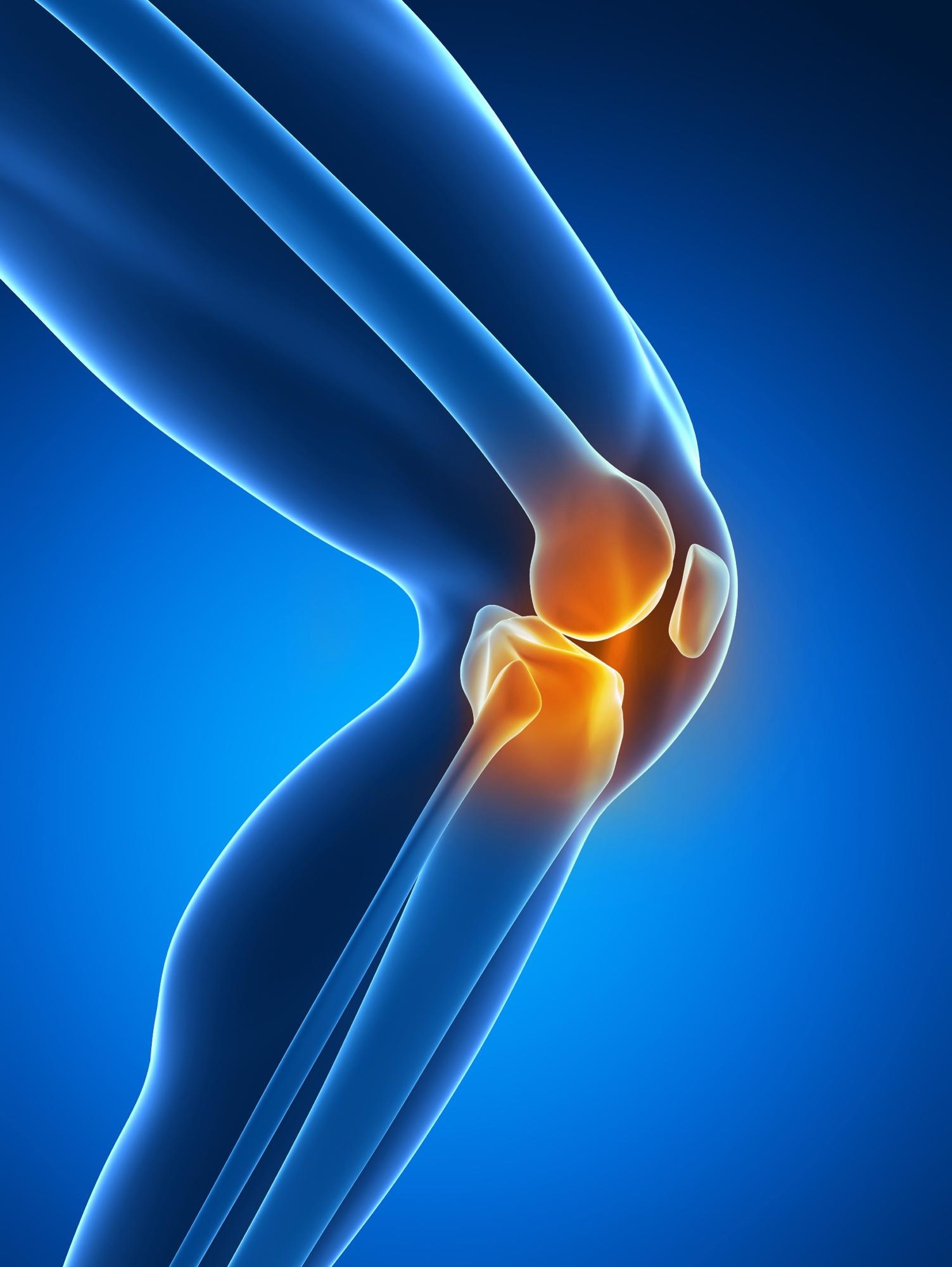Apr 12 2021
According to a recent animal-based study performed by scientists from the Perelman School of Medicine at the University of Pennsylvania, a novel biosealant therapy could help stabilize injuries that cause the disintegration of cartilage tissues, opening the door for a future fix or—even better—start working directly with new cells to improve healing.

Image Credit: SciePro/shutterstock.com
The researchers’ study was reported in the Advanced Healthcare Materials journal.
Our research shows that using our hyaluronic acid hydrogel system at least temporarily stops cartilage degeneration that commonly occurs after injury and causes pain in joints. In addition to pausing cartilage breakdown, we think that applying this therapy can present a surface that is ‘sticky’ for cells, such as stem cells that are routinely injected into joints to counteract injury. This reinforcing hydrogel could actually synergize with those cells to create a long-term solution.
Robert Mauck, PhD, Study Senior Author and Director of McKay Orthopaedic Research Laboratory, University of Pennsylvania
Mauck is also a professor of Orthopaedic Surgery.
The tissue covering the ends of bones at the joints is the articular cartilage. It prevents bones from painfully crushing together, and its resilience and strength enable it to go through a lot of forces amid the movement of humans.
Regrettably, such regular yet complex stresses cause the cartilage tissue to wear down easily—specifically during a certain form of injury—and is difficult to regrow or replace. This suggests that it is particularly significant to maintain the remaining cartilage stable and strong.
In this context, Mauck and Jay Patel PhD, the study lead author, a former post-doctoral fellow in the McKay Lab, and currently an assistant professor at Emory University, and their research team have designed a therapy to apply an altered version of hyaluronic acid—a substance that is naturally produced by the connective tissue of the body—that could be introduced to the site of the injured cartilage.
The researchers discovered that this therapy had to pursue a two-fold key, that is, reinforcement and sealing, to preserve cartilage.
We often relate this combined approach to treating a damaged deck in your backyard. To fortify the existing wood structure, you need something like a wood hardener, then you can apply a wood sealer to prevent future wear. In the same way, we applied a substance that seeps into the pores of the tissue and provides reinforcement, then ‘sealed’ it by guiding the behavior of injected stem cells towards forming a layer that caps the whole structure.
Jay Patel, PhD, Study Lead Author and Assistant Professor, Emory University
In a huge animal model, the team introduced the biogel to the impaired cartilage, demonstrating how it entwined with the matrix structure of the cartilage to stabilize it.
The team also showed that this biogel was retained for a minimum of one week in the joint surrounding.
When living cartilage was tested in laboratory settings, the team discovered that the use of the hyaluronic acid biogel restored normal activity to chondrocytes, that is, the cells inside the cartilage tissue. This implied that the microenvironment around the cells was currently being strengthened.
As soon as the microenvironment was strengthened, the researchers sealed the cartilage, so that additional tissue loss at the site of injury does not wear away the structure of the cartilage.
As such, the researchers integrated the hyaluronic acid hydrogel system with an injection of stromal cells/mesenchymal stem cells, to support the development of a thin 'living' barrier on the surface of the cartilage to defend it from further wear.
When the team compared the models that received the therapy to ones that did not, the treated models showed a thicker layer of protective tissue that defends the structure of the cartilage and preserves its function.
We’ve shown that this is an innovative technology and methodology for potentially addressing the complexities of treating damaged cartilage tissue that traditionally have made it so difficult. Next, we hope to translate this technology to more large animal studies and to the clinic in the near future.
Jay Patel, PhD, Study Lead Author and Assistant Professor, Emory University
These outcomes resulted in a translational grant from Penn Health Tech, the interdisciplinary center that integrates teams from Penn Engineering and Penn Medicine to make new medical technology.
The technology is also at the hub of a new firm (Forsagen LLC) spun out of the University of Pennsylvania with help of the Penn Center for Innovation (PCI) Ventures Program, which will seek to spearhead the entry of the system into the clinic.
The new company was co-founded by both Mauck and Patel, together with Jason Burdick, the study co-author and a professor of Bioengineering at Penn, and Ana Peredo, who is a PhD student in Bioengineering.
The study was funded by Penn Health Tech, the Department of Veterans’ Affairs, the National Science Foundation, and the National Institutes of Health (R01 AR056624, R01 AR077362, CMMI-1548571, IK1 RX003208, and IK6 RX003416).
Claudia Loebel, Kamiel S. Saleh, Brian C. Wise, Edward D. Bonnevie, Liane M. Miller, and James L. Carey are the other co-authors of the study.
Journal Reference:
Patel, J. M., et al. (2021) Stabilization of Damaged Articular Cartilage with Hydrogel‐Mediated Reinforcement and Sealing. Advanced Healthcare Materials. doi.org/10.1002/adhm.202100315.